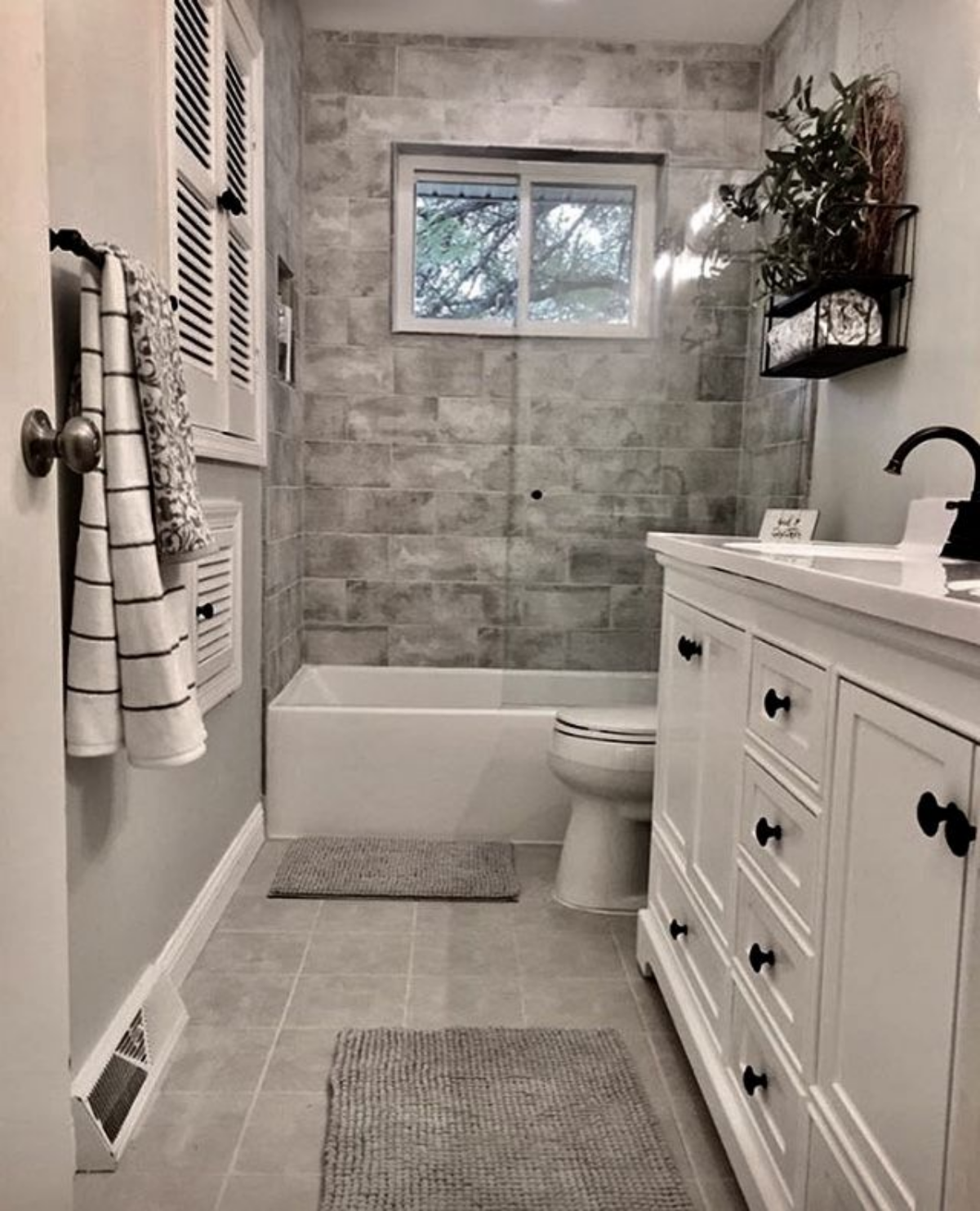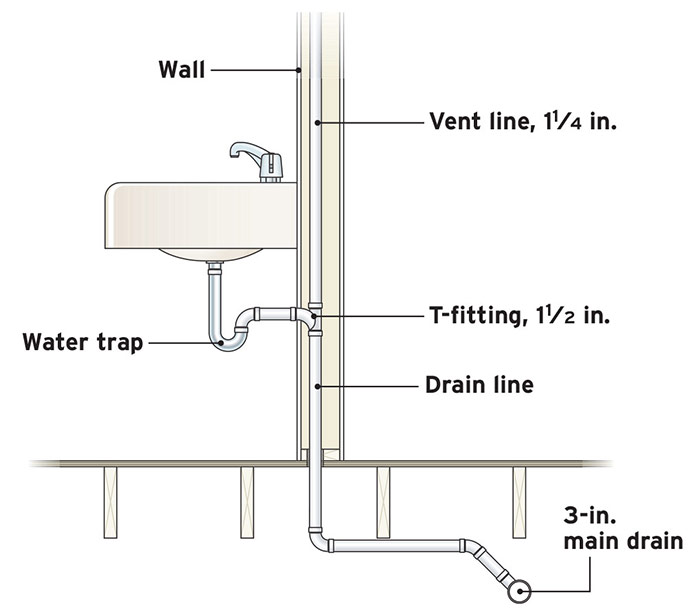Just how do you feel with regards to What Is A Plumbing Vent & How Do They Work??

Proper ventilation in plumbing systems is commonly forgotten, yet it is crucial for preserving the capability and safety of your home's plumbing. Ventilation helps regulate air pressure, prevent the buildup of harmful gases, and ensure the reliable elimination of waste. In this overview, we will explore the value of appropriate plumbing air flow, just how it works, and the advantages it gives your plumbing system.
Exactly How Ventilation Works in Plumbing Solutions
Air Pressure Law
Appropriate air flow preserves well balanced atmospheric pressure within the pipes system. When water moves via pipes, it displaces air. Without adequate air flow, this variation can develop negative pressure, leading to slow down drains pipes or siphoning of water from catches, which can create unpleasant odors to leak right into the home.
Avoiding Drain Gas Accumulation
Among one of the most critical functions of plumbing vents is to avoid sewer gases, such as methane and hydrogen sulfide, from gathering within the home. These gases can posture serious health threats and are very flammable. Vent pipes allow these gases to escape securely outside.
Helping in Waste Elimination
Air flow helps in the efficient elimination of wastewater by avoiding airlocks in the drain system. When air can flow easily through the vents, it allows water and waste to move smoothly via the pipelines, decreasing the threat of blockages and back-ups.
Benefits of Correct Ventilation
Improved System Performance
Correctly aerated plumbing systems operate extra effectively, with less obstructions, faster draining, and much less strain on the pipes. This efficiency prolongs the life-span of the plumbing system.
Improved Air Quality
By avoiding sewage system gases from entering your home, correct air flow adds to much better interior air top quality, making your living setting healthier and a lot more comfortable.
Protecting Against Water Damage
Ample ventilation helps prevent water from being siphoned out of traps, which can result in sewer gases entering the home and causing water damage with time.
Actions to Make Sure Appropriate Ventilation
Consulting Pipes Codes
Always seek advice from regional plumbing codes when designing or customizing your plumbing system. These codes give the needed guidelines for proper airing vent and ensure your system satisfies safety criteria.
Regular Examination and Maintenance
Normal examinations can aid identify potential air flow problems prior to they become major troubles. Maintenance jobs, such as cleaning vent pipes and looking for clogs, are vital for maintaining the system in good working order.
Specialist Installation
For brand-new installations or significant modifications, it's a good idea to work with a professional plumbing. They have the competence to make certain the air flow system is appropriately made and mounted according to code.
Comprehending Ventilation in Pipes
Air flow in plumbing refers to the network of pipelines that enable air to flow via the drain system. These vents serve multiple objectives, including managing atmospheric pressure within the pipelines, protecting against sewage system gases from entering the home, and assisting in the smooth flow of wastewater.
Sorts Of Pipes Vents
Key Stack Vent
The primary pile vent, also known as the air vent stack, is the main air vent in a plumbing system. It expands from the main drain line up with the roof, enabling gases to run away and fresh air to enter the system.
Branch Vent
Branch vents connect to the primary pile vent and serve specific components, such as sinks, bathrooms, and showers. These vents guarantee that each fixture has ample air flow to work correctly.
Air Admission Shutoff (AAV).
An Air Admission Valve (AAV) is a one-way shutoff that enables air to get in the plumbing system without the demand for a conventional air vent pipe expanding with the roof. AAVs are frequently used in renovations or areas where mounting a conventional air vent is impractical.
Indications of Poor Ventilation in Plumbing.
Slow Draining Fixtures.
If your sinks, tubs, or commodes are draining gradually, it could be an indication of bad air flow. Inadequate air flow can create a vacuum cleaner result, making it tough for water to drain pipes effectively.
Gurgling Appears.
Gurgling noises originating from drains are commonly a result of air being sucked with water traps due to negative stress in the pipelines. This is a clear indication of not enough air flow.
Unpleasant Odors.
Drain odors inside your home are a warning that your pipes system is not appropriately aerated. This can imply that drain gases are not being properly vented outside, resulting in potentially harmful problems.
Typical Air Flow Errors.
Insufficient Vent Sizing.
Utilizing undersized air vent pipelines can bring about inadequate air flow and stress inequalities in the system. It's important to make use of vents that meet the certain requirements of your plumbing system.
Improper Vent Placement.
Positioning vents too far from the fixtures they offer can lower their effectiveness. Correct placement guarantees that air can move openly and successfully with the system.
Disregarding Code Demands.
Building codes give certain guidelines for pipes air flow. Neglecting these codes can result in a system that stops working to work correctly and may bring about costly fixings or carcinogen.
Verdict.
Proper ventilation is a critical element of any type of pipes system, ensuring that it functions effectively and securely. By comprehending the value of air flow, acknowledging the indications of bad air flow, and taking actions to keep your system, you can prevent pricey issues and protect your home's air quality.
4 Things You Should Know About Your Plumbing Vents
What Plumbing Vents Are
Also called a vent stack, a plumbing vent is a vertical pipe attached to your drain line that runs through your roof. The plumbing vent pipe, or plumbing air vent, removes gas and odors from your plumbing system and allows fresh air to enter the pipes, helping the water to flow out of the drain pipes.
What Plumbing Vents Do
Plumbing vents have two basic functions. One of which is to allow unpleasant smelling wastewater and sewer gasses to escape your plumbing system instead of entering your home. Plumbing vent pipes are typically located on roofs, away from windows, to ensure the fumes exit the home completely.
The other function of the plumbing vent is to move fresh air into your plumbing system. This helps move water through every plumbing fixture in your house, like toilets and sink drains. Think of the way in which you need to let a little air into the bottle as you pour soda in order to make the drink flow smoothly.
Different Types of Plumbing Vents
- True vent: This is the most common vent option. In simplest terms, a true vent is a vertical pipe attached to your drain line that exits through the roof. They often function as the main vent that other fixtures can connect to.
- Re-vent pipe or auxiliary vent: Attached to the drain line near specific plumbing fixtures, re-vent pipes run up and over to connect to the main vent.
- Common vent: Two plumbing fixtures installed on opposite sides of a wall are typically tied into the vent stack using something known as a sanitary cross.
- Wet vent: This venting option operates as a drain pipe and a vent at the same time. Wet vent drainage systems drain water from one fixture while venting the air from another. Although they’ve been used for over 100 years, wet vent systems have only recently been added to the plumbing code in many areas. If you’re planning on installing one in a bathroom remodel, make sure you check your local code prior to construction.
- Loop vent: For free-standing fixtures like kitchen island sinks, loop vents are ideal. These vent pipes run under the floor, rise from the P-trap, and create a loop inside the cabinet sink.
- Air admittance valve: An AAV is a one-way mechanical valve typically installed at the site of the plumbing fixture. AAVs allow venting to occur without having to tie into a larger venting system. They’re ideal for venting fixtures where you aren’t able to easily connect to an existing vent system.
Common Plumbing Vent Issues
Although vent pipes typically don’t have water flowing through them, they’re still subject to many typical plumbing issues. For example, clogs are one of the most common problems associated with sewer vent pipes. If your vent pipe gets clogged, all of your plumbing fixtures tied into the vent stack will be affected.
A sink with a slow drain that bubbles and gurgles or a strong sewage smell around your toilet are both indicators that your toilet vent pipe is clogged. Because most vent pipes exit through the roof, old leaves, twigs or even a bird’s nest could be clogging the pipe.
Clogs in your vent pipe system cause a buildup of negative pressure, meaning that water won’t be able to flow out of your home very well. It’s similar to putting your finger over the opening of a straw to trap water inside. When you remove your finger, the water is able to flow out of the straw.
If you suspect you have any blockage in your vent, make sure you have a professional come examine the situation. Left unchecked, a blocked air vent can lead to other costly repairs, like leaks and sediment buildup.
Under Pressure
Pipe vents are essential aspects of a home’s plumbing system. Owning a home means learning about all sorts of things you never put much thought into before. But by understanding as much as you can about the important systems of your home, you can keep those budgets intact and those anxiety levels low.
https://www.homeserve.com/en-us/blog/home-improvement/plumbing-vents/

As a fervent reader on What Are Plumbing Vents and Why Are They Important?, I thought sharing that segment was worth the trouble. Remember to take the time to promote this blog if you appreciated it. I enjoy your readership.
Additional Information
Comments on “Essential Reasons for Proper Ventilation in Plumbing Systems”